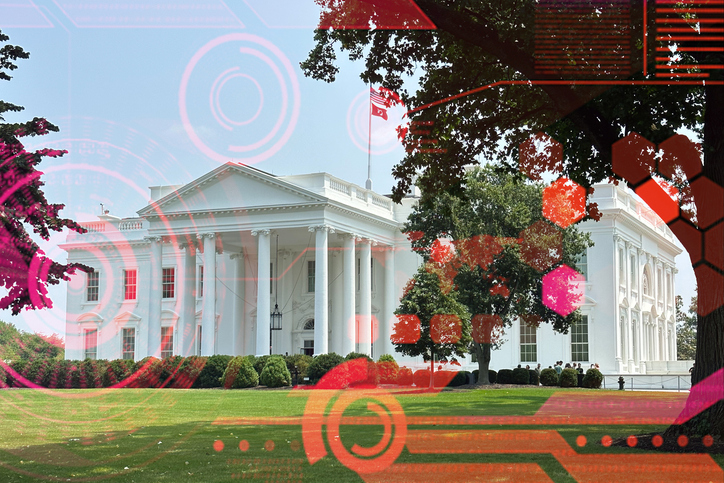Biden’s Executive Order Sounds the Supplier Data Alarm

In 2022, more than half of top executives and IT leaders (51 percent) indicated inflation was among the greatest external threat to business continuity. The study, 2023 Global Supply Chain Executive Report, conducted by Cleo, also found that 33 percent of respondents cited an economic downturn as a threat, and three in 10 respondents said geopolitical events.
Current macroeconomic conditions keep board members and executives up at night. But it's unnecessary to lose sleep over these matters. More actionable issues remain in your organization’s control, including supply chain disruptions. Yes, you can control your supply chain — if you prioritize data quality, flexibility and agility. Perfecting your organization’s approach to addressing these concerns can also improve your ability to weather economic turbulence.
As the CEO of TealBook, a supplier data platform for the procurement and supply chain industries, high-quality supplier data is always top of mind for me. But supply chain visibility and data quality have become even more critical in recent months.
Last November, President Joe Biden issued an executive order (EO) detailing more than 30 actions to strengthen America’s supply chains, including the creation of the Council on Supply Chain Resilience, the use of the Defense Production Act (DPA) to increase domestic production of essential medicines, and the development of new cross-governmental supply chain data-sharing capabilities.
These actions will have significant ramifications on global supply chains. Company leaders must address these concerns head-on, and sooner than later.
Diversify Suppliers to Jumpstart Innovation
Supply chain diversification is key. Although the EO does not mandate requirements about supplier contracting, the EO clearly outlines diversification’s importance in several sectors, including:
- The U.S. Department of Agriculture is investing US$196 million to strengthen the global food supply chain. Initiatives include diversified food processing, likely through the support of local and regional food systems and more sustainable farming practices.
- The Indo-Pacific Economic Framework for Prosperity (IPEF) supply chain agreement aims to provide partners with better tools to promote supplier diversification, with the goal of avoiding extended parts shortages. Additionally, the International Technology Security and Innovation (ITSI) fund — created in 2022 — promotes diversification in the semiconductor industry. The fund’s recent initiatives include the examination of supply chain interdependencies and thorough risk assessments.
- Health care. The Americas Partnership for Economic Prosperity aims to drive regional competitiveness via supply chain diversification. Clean energy and medical supply chains are of particular interest.
- The Mineral Security Partnership (MSP) plans to accelerate the adoption of diverse suppliers, particularly those adhering to the highest standards of labor, environmental and sustainability practices.
Agreements reached in the EO signal that although critical considerations like supplier diversification haven’t received additional scrutiny yet, further regulations are coming. Furthermore, the EO’s tenets suggest something most leaders already know to be true: Contracting with a wide range of suppliers opens the door to innovation and agility.
Leaders can act today by assessing their current supplier pool (including Tier-2 and Tier-3 suppliers) to ensure localized disruptions won’t have outsized impacts on their organization’s ability to deliver this year.
A Revitalized U.S. Supplier Network
The pharmaceutical, energy and manufacturing industries received special attention in the EO. That’s unsurprising — supply chain failure among these critical players can be disastrous.
Consider, for example, the supply chain issues associated with the COVID-19 vaccinations rollout. Sensitive materials and storage requirements for these vaccines led to a prolonged and widespread shortage. Researchers have since identified several issues with the 2021 vaccine supply chain, including a “choppy process” involving more than 100 geographically distributed facilities.
The newly established Supply Chain Center aims to combat future disruptions by “integrating industry expertise and data analytics to develop innovative supply chain risk assessment tools.” Offshore dependencies will be considered a significant driver of risk. As the executive government reviews foreign dependencies, we should anticipate encouragement for stateside supplier investments. For example, tax incentives à la Build America Buy America may emerge, enabling redoubled domestic investment.
To meet increased domestic labor and supplier needs, organizations must converse far more deeply with their data. Leaders should follow the Supply Chain Center’s lead and adopt tools enabling data analytics and comprehensive supply chain assessments. Otherwise, leaders risk losing an incredibly lucrative opportunity for direct financial incentives and improved agility.
Understand and Implement Real-Time Visibility
November’s EO underscores the importance of supply chain resilience. But resilience is only possible with access to comprehensive, of-the-minute data and analytics capabilities. Leaders who understand their supply chain can diversify suppliers, anticipate disruptions and make informed decisions about resource localization.
At the minimum, leaders must review their existing supply chain by accessing or compiling a golden record of suppliers. Leaders can use this information to better understand their partners down the value chain — that is, not only their direct suppliers but also their suppliers’ suppliers.
The accuracy of this downstream supplier data largely depends on an organization’s automation capabilities. A “set it and forget it” system invites inconsistencies and inaccuracies, while an automated system keeps supplier data accurate over time. Reliable data is a huge boon for leaders conducting risk assessments and financial audits.
And that’s a big deal because comprehensive risk assessment is essential in the wake of the EO. Working with sanctioned suppliers could soon land organizations in even hotter water. The U.S. Department of Labor has invested $8 million to investigate forced labor violations over the next eight years. Penalties for organizations that contract with violators — even unknowingly or downstream — can expect a hefty bill.
Cyber vulnerabilities, macroeconomic conditions and geopolitical factors will continue to impact supply chains this year. The EO is a call to action that acknowledges these harsh realities. It’s time for leaders to diversify suppliers, proactively prepare for domestic investment and increase data analytics capabilities.
Today, these capabilities are competitive differentiators. Under the EO, they will likely become necessities for ensuring business continuity.


